
22 10 27 34 How 10 Employee Experience Challenges Changed For These Leaders - Brett Farmiloe, Terkel.io Why So Many Companies Suck At Employee Experience? - Ann Barlow and Courtney Ellul, Peppercomm Put Employee Engagement At The Heart Of Your Business To Beat The Effects Of The Great Resignation - Sara Cohen, Forsta 4 Employee Experience Trends For 2023 - Melanie Lougee, ServiceNow DECEMBER 2022 • Vol.09 • No.12 (ISSN 2564-1999) 6 WAYS TO MAXIMIZE EMPLOYEE HAPPINESS DURING THE HOLIDAY SEASON - Dr.
Baiya,
Evans
The Innovator’s Advantage Academy

6 Ways To Maximize Employee Happiness During The Holiday Season Steps to help your employees reenergize and feel valued - Dr. Evans Baiya, The Innovator’s Advantage Academy 07 INDEX On the Cover Human Experience Excellence - Engagement, Performance, Rewards & Recognition DECEMBER 2022 Vol.09 No.12 Articles (ISSN 2564-1999) 20 2023 Trends: The Future Of Diversity, Equity, Inclusion, And Belonging Three critical elements to consider - Ivori Johnson, Director, Diversity, Equity, Inclusion, and Belonging, ChartHop 25 Four Tips For Fighting Employee Burnout HR leaders should step up and alleviate widespread workforce burnout - Keisha Behrmann, Senior Talent Acquisition Specialist, CoachHub 16 Building a Culture of Appreciation During the Holidays - Reward Gateway Sponsored Content 29 Why Feeling Connected When Working Apart Is More Important Than Ever Employee engagement in a digital world - Avigail Dadone, Chief People Officer, Diligent 37 5 Reasons Team Building Usually Fails Team building events do little to address the conditions needed to build a high performing team - Kim Baker, Team Builder/Designer, Corporate Consultant, And Speaker, Vivid Performance Group 40 The Rise Of The ‘Employee’ Rebel Key factors instigating the ‘rebellion’ - Murad Salman Mirza, Thought Leader, Organizational Architect, and Author
How 10 Employee Experience Challenges Changed For These Leaders
A good employee experience leads to higher employee engagement - Brett Farmiloe, CEO and CHRO, Terkel.io
Why So Many Companies Suck At Employee Experience?
It’s wrong when companies focus on managing rather than leading people - Ann Barlow MD, Employee Engagement and Courtney Ellul, Partner, Peppercomm


Put Employee Engagement At The Heart Of Your Business To Beat The Effects Of The Great Resignation
Focusing on your employees might be the best business decision you ever make - Sara Cohen, Chief People Officer, Forsta
27 34
4 Employee Experience Trends For 2023
Technology will increase empathy, identify growth opportunities, and more - Melanie Lougee, Head, Employee Workflow Strategy, ServiceNow
Top Picks 10 22
INDEX
Human Experience Excellence - Monthly Interactive Learning Journal


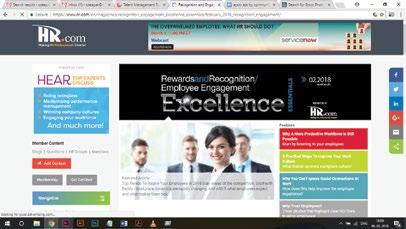
The future is all about going beyond the employee experience to focus on human experience. This monthly interactive learning experience showcases strategies and programs to improve employee performance and strengthen your team.
Human Experience Virtual Events
Virtual Events in the Recognition and Engagement track will give you everything you need to recognize and reward employees creating an inspired workforce and organization that will drive innovation and boost productivity. Sessions feature the world’s top thought leaders in the recognition and engagement space covering topics from customer loyalty, safety, sales, company culture and motivation to what makes an effective and efficient results-based program. Each Virtual Event consists of up to 10 credit webcasts.
Human Experience Webcasts for Credit
HR.com webcasts deliver the latest Recognition and Engagement industry news, research trends, best practices and case studies directly to your desktop. Webcasts are available live online with a downloadable podcast and a copy of the slides (PDF) available before and after each webcast. Earn all of the required recertification credits for aPHR, PHR, SPHR, GPHR, and SHRM Certifications. HR.com’s one-hour webcasts, in every HR specialty including HRIS and Payroll, are pre-approved for HRCI and SHRM credit (excluding Demo webcasts).
IHR Rewards and Recognition Community
Join almost 25,600 HR.com members with a similar interest and focus on rewards and recognition. Share content and download research reports, blogs, and articles, network, and “follow” peers and have them “follow” you in a social network platform to communicate regularly and stay on top of the latest updates. This well established Rewards and Recognition Community is an invaluable resource for any HR professional or manager.
SEP 2017 Vol. 5 No. 09 JANUARY 2021 Vol.08 No.01 18 12 25 30 Digital Is All The Rage: Why Employee Rewards Must Include Digital Options In 2021 - Theresa McEndree, Blackhawk Network Employee Experience Trends In 2021Tips To Increasing Your Reward And Recognition Strategies Post-Covid - Richelle Taylor, One10 How To Create Meaningful - Mike Byam, Terryberry HOW TO EMBRACE THE SHIFTS THAT OCCUR AS WE RETURN TO A NEW NORMAL WORKPLACE Key workplace trends for 2021 - David Roberts, Chief E�ecutive �fficer, �lchemer �hemed Edition on Agile Reward & Recognition Strategies How are our Human Experience Products and Services helping to make you smarter? Use these invaluable Human Experience resources today! For more information phone: 1.877.472.6648 | email: sales@hr.com | www.hr.com
Editorial Purpose
Excellence Publications
Debbie McGrath CEO, HR.com - Publisher
Human Experience Excellence Team
&
Debbie Mcgrath Publisher, HR.com
Babitha Balakrishnan Editor, Human Experience Excellence

Why Employers Should Invest in the Employee Experience
As 2023 is fast approaching, we reflect on the disruptive year and look ahead to another year where we will sail through the turbulence. As economic uncertainties loom large over 2023, employers are constantly trying to address the employee experience gaps that remain and emerge in their organizations. By investing in modern workplace experiences, employers can redefine workplace ethos and create a flexible, and collaborative culture that employees need today.
The December edition of Human Experience Excellence includes expert articles that focus on employee experience challenges in organizations today, strategies for building high-performing teams, creating a people-centric culture, and much more.
The upcoming holidays can provide a moment of reprieve for workers and could be a strategic opportunity for companies to invest in organizational energy. In his article, 6 Ways To Maximize Employee Happiness During The Holiday Season, Dr. Evans Baiya (The Innovator’s Advantage Academy) urges leaders to follow six ways to maximize employee happiness and productivity during the holidays that will motivate employees as they return back to work in the new year.
Learn how 10 leaders solved an employee experience challenge in their respective organizations in Brett Farmiloe's (Terkel. io) article, How 10 Employee Experience Challenges Changed For These Leaders. From incorporating employee feedback to growing a more inclusive and diverse workplace, there are many ways to make employees feel more valued and appreciated.
When it comes to ongoing employee experience, most companies, to be blunt, suck. There are a few things you can do to try to remind your colleagues how well things have gone when
both employer and employee have benefitted. If your company is led by people more inclined to wield power than influence, read Ann Barlow and Courtney Ellul's (Peppercomm) article, Why Do So Many Companies Suck At Employee Experience? which offers valuable insights on this topic.
Many disgruntled employees blame poor management and a lack of positive reinforcement and guidance as the leading causes for their departure. Do you think team-building events will help boost enthusiasm and increase productivity? Read Kim Baker's (Vivid Performance Group) article, 5 Reasons Team Building Usually Fails, which highlights why an overall strategic plan is necessary to create energetic and thriving employees.
Also, check out four trends HR and people managers should be paying attention to as they think about creating better work environments in Melanie Lougee’s (ServiceNow) article, 4 Employee Experience Trends For 2023.

In brief, disengagement can be tied to employees not knowing where their future at an organization is. If survey reports are to be believed, not many employees feel engaged at work in 2022. HR leaders can take up this opportunity to help fill the gap with fun, unique and inspiring team investments and keep employees supported and inspired.
We hope you enjoy reading all the insightful articles and get back to us with your valuable feedback!
Happy Reading!
Disclaimer: The views, information, or opinions expressed in the Excellence ePublications are solely those of the authors and do not necessarily represent those of HR.com and its employees. Under no circumstances shall HR.com or its partners or affiliates be responsible or liable for any indirect or incidental damages arising out of these opinions and content.
NOTE
EDITOR’S
OR For Advertising Opportunities, email:
sales@hr.com Copyright © 2022 HR.com. No part of this publication may be reproduced or transmitted in any form without written permission from the publisher. Quotations must be credited.
Our mission is to promote personal and professional development based on constructive values, sound ethics, and timeless principles.
Dawn Jeffers VP, Sales Sue Kelley Director (Product, Marketing, and Research)
Babitha Balakrishnan and Deepa Damodaran Excellence Publications Managers and Editors
Babitha Balakrishnan Editor Arun Kumar R Design and Layout (Digital Magazine) Chandra Shekar A K Magazine (Online Version)
For
Human Experience Excellence (ISSN 2564-1999) is published monthly by
1L0 Internet Address
Subscribe now for $99 / year And get this magazine delivered to your inbox every month Become a Member Today to get it FREE! SIGN UP
Submissions
Correspondence Please send any correspondence, articles, letters to the editor, and requests to reprint, republish, or excerpt articles to ePubEditors@hr.com
customer service, or information on products and services, call 1-877-472-6648
HR.com Limited, 56 Malone Road, Jacksons Point, Ontario L0E
: www.hr.com
Write to the Editor at ePubEditors@hr.com
In a world of unparalleled challenges (global pandemic, racial injustice, political rivalry, digital 4.0, emotional malaise), uncertainty reigns. Finding opportunity in this context requires harnessing uncertainty and harnessing starts with reliable, valid, timely, and useful information. The Excellence publications are a superb source of such information. The authors provide insights with impact that will guide thought and action.
Dave Ulrich
Rensis Likert Professor, Ross School of Business, University of Michigan Partner, The RBL Group

Excellence publications are my ‘go-to’ resource for contemporary and actionable information to improve leadership, engagement, results, and retention. Each edition offers rich and diverse perspectives for improving the employee experience and the workplace in general.

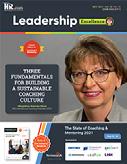
Julie Winkle Giulioni
Author, Virtual /Live Keynote Presenter, Inc.’s Top 100 Leadership Speakers

I regularly read and contribute to Leadership Excellence and Talent Management Excellence. I use many of the articles I read to augment my own presentations and I often share the articles with my clients. They are always quick, right on target for the latest issues in my field, and appreciated by my clients.

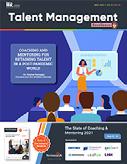
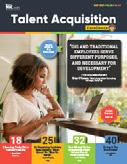
If you want to stay up to date on the latest HR trends, choose a few of the different issues from the Excellence series of publications.
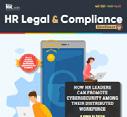
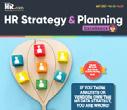
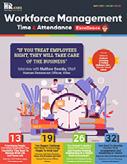
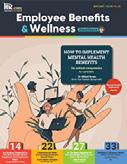
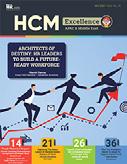

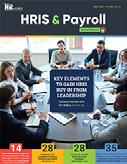
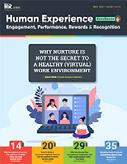 Dr. Beverly Kaye
Dr. Beverly Kaye
CEO, BevKaye&Co.

We’re eager to hear your feedback on our magazines. Let us know your thoughts at
WHY EXCELLENCE PUBLICATIONS?
ePubEditors@hr.com
6 Ways To Maximize Employee Happiness During The Holiday Season
Steps to help your employees reenergize and feel valued
By Dr. Evans Baiya, The Innovator’s Advantage Academy
The past few years have been tumultuous for workers, and employees are still reeling from the pandemic, economic uncertainty, global inflation, and increased cost of living. Combined with the blurred line between work and home life, employees are experiencing more stress than ever.
However, the upcoming holidays can provide a moment of reprieve for workers—and could be a strategic opportunity for companies to invest in organizational energy. A company’s energy comes from its employees, so if leaders want focused, engaged, and productive workers, they should invest in programs geared toward improved well-being, even when employees are at home or vacationing.
As the holidays approach, consider these six ways to maximize employee happiness and productivity during the holiday season and beyond.
Invest in Your Employees’ Self-Awareness and Self-Development
The holiday season is a great time for individuals to rest, reset, and reevaluate themselves and their personal goals. Many spend time thinking about the
past year and looking forward to the next, perhaps setting new goals or making resolutions. That makes this an excellent time for employers to contribute as well as invest in their employees’ self-awareness and self-development.
Self-aware employees are better for the organization. Employers should not be afraid to invest in their employees’ knowledge and career development through assessments, coaching, or educational credits—even if those learnings don’t exactly match the employee’s current role. These opportunities will instead make employees feel seen, heard, and valued because they will recognize that the company wants them to learn and grow as individuals.
Share Good News with Your Team Before Vacations
The time leading up to a holiday or vacation is great for sharing good news with your employees. Whether that’s praise on a recent job well done or a big promotion, the good news will follow them through their vacation. Employees will return to work not only happy and rested, but also engaged and motivated for the projects ahead.
Human Experience Excellence presented by HR.com December 2022 7 Submit Your Articles
COVER ARTICLE
Ensure Employees Use Their Vacation Time
This can sometimes be a challenge for employers, especially during times of worker shortages. But it’s incredibly important to maintain productivity and energy levels. Smart leaders know the organization only runs smoothly on the energy it already has, and that energy comes from its employees. Managers should be challenging their team members to plan for vacation time throughout the year, not just during the holiday season. Asking when workers are taking their allotted time off allows that employee to save, plan, and look forward to a vacation, and for managers and teams to plan ahead for their absence. Another solution is mandatory company-wide closures during the holiday season. While ensuring every employee gets time off, this tactic also enables teams to prepare customers, vendors, and other stakeholders for the closure—who, in turn, might also benefit from the time away.
Pay Employees to Take Time Off
The main reason people don’t take vacations is financial. Perhaps they don’t have enough money to plan a trip, or even take time away from work. Organizations can and should address the economic side of vacation time and provide potential solutions for employees. For example, allow employees to exchange extra vacation time for cash. This is a win-win for both the employee and the company because the employee will then have the time and the money to vacation, and the organization will have reduced the liability of unspent vacation time on their books. Another potential solution is paying out bonuses early—many wait for their bonus before planning a trip or buying holiday gifts. The earlier the company can pay these, the sooner employees can plan. Finally, the organization could consider investing in holiday discounts to share with their employees or offer yearly travel stipends.

Human Experience Excellence presented by HR.com December 2022 8 Submit Your Articles
6 Ways To Maximize Employee Happiness During The Holiday Season
Set Boundaries and Respect Time Off
This challenge has become even more apparent with the increase in virtual and hybrid work. For many, the lines between their personal and professional lives have blurred. Respecting employees' time off and setting those boundaries will allow team members to truly disconnect from their work. Challenge employees to turn off their devices and cease professional interactions, and provide systems to enable employees to disconnect. For example, delay email delivery and use out-of-office-settings, avoid calling or messaging them, and have them turn off Slack and other notifications. Keeping other team members or stakeholders informed about a particular employee’s absence will also help avoid any vacation-time contact. Leading up to the vacation, plan for temporary points of contact if needed, and inform those who need to know.
Celebrate Vacations and Allow for PostHoliday Storytelling
Whenever an employee says they want to take time off, you should encourage them and share the update with your team and relevant stakeholders. Making it a big deal encourages other team members to take their
much-deserved time off. And when those employees return, allow them to share what they did or learned during the vacation. This not only makes the time away from work more purposeful but allows for team bonding and improved organizational energy. It makes employee health and wellness a little bit more tangible for everyone.
The secret to improving employee energy and engagement? Focus on your employees’ well-being, especially around the holidays. The consequences of failing to take time off throughout the year not only increase the stress of the employee, their team, and the organization, but can affect their families, friends, and communities.
This year, challenge yourself and your team to follow these six ways to maximize employee happiness and productivity during the holidays and see just how energized everyone is upon their return in the new year.

Dr. Evans Baiya, is an internationally recognized and trusted guide to business leaders and innovators. Using his 6-stage process, he helps businesses identify, define, develop, verify, commercialize, and scale ideas so the businesses and individuals can learn, grow, and thrive. He is the co-author of the award-winning book, The Innovator’s Advantage, and co-creator of The Innovator’s Advantage Academy, a detailed step-by-step innovation training.
Would you like to comment?

Human Experience Excellence presented by HR.com December 2022 9 Submit Your Articles
6 Ways To Maximize Employee Happiness During The Holiday Season
How 10 Employee Experience Challenges Changed For These Leaders

A good employee experience leads to higher employee engagement
By Brett Farmiloe, Terkel.io
From incorporating employee feedback to creating a safe remote workplace, here are 10 answers to the question, “How did you solve one employee experience challenge this year?”
● Incorporating Employee Feedback
● Onboarding a High Volume of New Employees as We Grew
● Experiencing High Turnover
● Growing a More Inclusive and Diverse Workplace
● Recovering Equipment From Remote Teammates
● Ensuring Employee Engagement
● Using the Correct Technological Tools
● Mitigating Burnout Among Remote Employees
● Showing an Applicant Why They Didn’t Get the Job
● Creating a Safe and Secure Remote Working Environment
Human Experience Excellence presented by HR.com December 2022 10 Submit Your Articles
TOP PICK
Ramirez, CEO, Rephrasely

Incorporating Employee Feedback
We used to struggle with incorporating employee feedback into our review process. Employees would provide feedback on ways to improve the work experience but then would not see those improvements reflected in their reviews. We addressed this problem head-on, and now our employees are more involved in the feedback and review process.
This year, we created a six-week feedback cycle where employees give feedback on their managers and other company leadership. Managers then incorporate that feedback into their management techniques, and employees provide additional feedback on the changes.
This cycle has meant that employees can see the impact of their feedback and that they have a say in the changes to improve their work experience. The cycle has encouraged open communication and made our employees feel more valued and appreciated.
Onboarding a High Volume of New Employees as We Grew

One employee experience challenge that I faced and conquered this year was onboarding a high volume of new employees as we rapidly grew our organization.
We developed an effective onboarding system to ensure all newly hired employees had the same positive experience, regardless of their position in the company. This included developing and implementing a comprehensive orientation program, providing targeted training materials for each job function, and offering resources and support to help employees transition into their roles.
We also made sure all onboarding materials were consistent in format, easy to use, and accessible on a variety of platforms. In addition, we provided our new hires with mentors who could answer questions they had about their roles and provide guidance throughout the onboarding process. By taking these steps, we could make sure our new employees felt welcome and prepared for success at the company.
Human Experience Excellence presented by HR.com December 2022 11 Submit Your Articles How 10 Employee Experience Challenges Changed For These Leaders
Matthew
Amira Irfan, Founder & CEO, A Self Guru
Lorien Strydom, Executive Country Manager, Financer.com

Experiencing High Turnover
One of the biggest challenges I faced this year was addressing our company’s turnover rate. We had been seeing a steady increase in the number of employees leaving, and we needed to find out why.
After conducting exit interviews and analyzing the data, we found that most employees who were leaving were doing so because they felt undervalued and unappreciated. We implemented a series of changes, including adding more opportunities for employee recognition and development.

As a result, we’ve seen a significant decrease in turnover and an increase in employee satisfaction. I’m proud to say that we’ve conquered this challenge and created a better experience for our employees.
Linda Shaffer, Chief People Operations Officer, Checkr

Growing a More Inclusive and Diverse Workplace
This year, we faced the challenge of creating a more inclusive and diverse workplace. We did this by implementing unconscious bias training for all employees, and by creating employee resource groups for underrepresented groups.
We also launched a new mentorship program that pairs employees with mentors who can help them navigate their careers. Because of these efforts, we’ve seen a significant increase in employee satisfaction and engagement.
Human Experience Excellence presented by HR.com December 2022 12 Submit Your Articles
How 10 Employee Experience Challenges Changed For These Leaders
Brittney Simpson, HR Operations Manager, Walker Miller Energy Services

Recovering Equipment From Remote Teammates
Our biggest employee experience challenge has been recovering equipment from remote team members in a timely manner when they offboard. Our HR team has worked in partnership with our IT department to continually refine this process. However, those efforts have been met with varying levels of success until recently.
What helped us move this forward was connecting with former employees and inquiring about the equipment return process. From those conversations, we could identify the reasons employees either don’t return equipment or do so late.
Next, we developed solutions for those reasons. For example, some of our employees live in remote areas without easy access to the vendor we use for shipping services.
With this data, we could offer either an extended equipment return date or reimburse a local shipping option more convenient for them. Communicating with your offboarding employees and identifying any barriers to equipment return in advance is working for our team.
Ensuring Employee Engagement
I think the biggest challenge that my team and I faced this year was ensuring that our employees felt like they could contribute and make a difference in the work that they were doing.
We did this by ensuring that we had regular communication with our employees and that we provided them with opportunities to provide feedback on their work. Additionally, we offered opportunities for employees to take part in company-wide initiatives and programs.
Employee engagement is critical to the success of any organization.
It is the level of commitment and involvement an employee has with their work and the company. High levels of employee engagement lead to increased productivity, improved quality of work, and lower levels of absenteeism and turnover. Engaged employees are more likely to be satisfied with their jobs and have a positive attitude toward their work.
Tali Ditye, Co-Founder, Mommyhood101

Human Experience Excellence presented by HR.com December 2022 13 Submit Your Articles
How 10 Employee Experience Challenges Changed For These Leaders
Derek Bruce, Senior Director, Skills Training Group

Using the Correct Technological Tools
One employee experience challenge I faced this year was making sure our team had the correct technological tools to do their job efficiently. Most of our work is related to course designs, and we quickly realized that the system we were using was outdated and was no longer the best option for the company.
This caused a lot of frustration among employees who were trying to do their job and not being able to because of technology issues. After doing some research, we found an improved system that would work better for our consumers and employees.
Using the correct and updated technological tools has made a big difference in our employee experience. Our team is now more productive and efficient, and they are much happier with their jobs. This has been a great victory for our team this year, and I am excited to see what we can accomplish with the new system in place.
Mitigating Burnout Among Remote Employees
The biggest employee management obstacle we dealt with this year was mitigating burnout rates in our company. This is a primary risk in running a fully remote team. The lack of interpersonal interactions among the team can cause them to disengage from their tasks and get burnt out.
It was a red alert for us when we observed increasing burnout rates this year because this threatened to bleed into increased turnover rates as well, which will badly hurt our capacity.
To address this, we launched a well-being program led by our human resource team. We solely dedicated this program to looking closely into improving the overall employee experience through initiatives such as integrating recovery time, wellness packages, and virtual get-togethers to foster camaraderie in the workplace.
Mark Woodbury, Co-Founder, Minerva Equity

Human Experience Excellence presented by HR.com December 2022 14 Submit Your Articles
How 10 Employee Experience Challenges Changed For These Leaders
Jarir Mallah, HR Specialist, Ling App
Showing an Applicant Why They Didn’t Get the Job
There was one instance this year when an applicant refused to accept that they hadn’t gotten the position they’d applied for. Many emails were sent, inquiring and polite at first, and later filled with expletives stated and names being called.
Part of the job application process is to complete a task related to the job role to show the skill sets necessary to complete the job. In the end, it was important for the applicant to see how they didn’t quite measure up, so I shared another applicant’s task (name redacted) that revealed the skills we were looking for and provided a comparison.
The applicant was extremely thankful and understood what skills they needed to work on in order to apply for similar positions in the future.
Creating a Safe and Secure Remote Working Environment

To ensure the safety and security of our employees who have moved to remote work because of the pandemic, I implemented various solutions.
We invested in robust cybersecurity measures such as two-factor authentication for access to systems, data encryption, firewalls, and penetration testing. Additionally, our company provided employee training on cybersecurity best practices, and also created a remote work policy that was communicated to all employees on how they should conduct themselves while working remotely and ensured every employee had the right tools and equipment needed to do their job.
Our team also set up an Employee Assistance Program (EAP) to help employees manage stress, mental health concerns, and other issues related to the pandemic. We developed flexible work policies to account for different time zones and allowed employees to adjust their working hours according to their own needs.
Matt Teifke, Founder & CEO, Teifke Real Estate


Human Experience Excellence presented by HR.com December 2022 15 Submit Your Articles
How 10 Employee Experience Challenges Changed For These Leaders
Brett Farmiloe is the Founder and CEO –and currently CHRO - of Terkel.io Would you like to comment?
Building a Culture of Appreciation During the Holidays

4 min read
When the world is in chaos around you, it can be difficult to muster up any sort of festive cheer - and in fact, it might even feel inappropriate. But in times of highstress and change, building community is all the more important to create a stable environment for employees. According to the 2022 Edelman Trust Barometer, 69% of employees surveyed believe that people they work with are a significant source of community in their life.
Building a culture of appreciation doesn’t happen overnight, but the festive season is
an especially important time to bring some light into your employees’ day to day. Here are a few ideas to get the joy back into your organization’s daily rhythms:
Organize one-to-ones to coincide with the end of the year
An open, continuous feedback loop should be at the top of many managers' lists, but making it a point to celebrate the wins (and even discuss what needs to change) in a more “official” manner can help employees feel appreciated while celebrating their own personal growth and looking ahead for the bright spots in their career.
Broaden conversations and connections by sharing traditions
One of the yearly posts I often look forward to on our own employee engagement platform is when our employees share their own family traditions. Working at a global company, I’ve learned so much outside of my own borders, from our CFO’s explanation of a Japanese New Year, one of our Employee Engagement Specialists sharing how her family nods to her Puerto Rican heritage through Three Kings Day. I’ve even learned a tasty recipe or two from our Bulgarian colleagues.
Introduce some friendly competition
Whether you have a hybrid workforce, or your employees are fully remote, you can liven up traditional meetings by introducing a competition on who can decorate their area the best. This could be done in-office in your conference rooms, with specific themes, or you can let them choose their own. Award fun prizes or bragging rights to the winners of most creative, best use of lights, or make it a get-to-know-you game by having employees guess whose room is whose.
Get a little formal with your peer-to-peer or leadership-led recognition
The end of the year is a great time to send a company-wide note of heartfelt thanks from your CEO to the company, or create festive and cheerful eCards to add to your digital recognition portfolio. Moving from manual to digital recognition is a timesaver (not to mention postage savings, too!) that your HR team will love as much as the employees who receive their own moments of appreciation.
Top off the year with a monetary bonus
A recent survey showed that 75% of employees would spend their reward on essentials versus luxuries, so why not give them the choice, rather than gifting a generic box of chocolates?
Our client Legal & General used our bulk reward tool to reward its people through their employee engagement platform, sending each employee a $25 festive greeting, resulting in 50% of employees redeeming their award right away, and engaged 92% of those registered on the platform.

Last, but certainly not least, consider one of my favorite gifts: The gift of time! Give your employees a well-deserved extra day of annual leave, or let them clock off a few hours early to get in their last-minute needs before the festive season kicks off.

Alexandra
Powell,
of Client Cultural Insights
 Director
Director
Alex is a highly experienced employee engagement consultant, trainer and speaker. For over 20 years she has helped HR and business leaders implement strategies that drive true culture change. Alex paves the way to greater adoption and usage for Reward Gateway clients through data-driven insights across our global client base, keeping a pulse on the trends that engage employees most.

Your Holiday Guide to Building a Culture of Appreciation Through Technology How to deck the halls with appreciation all year round Download eBook Looking for more employee engagement inspiration? Join thousands of others who receive inspiration in their inbox each month. Sign up for the Reward Gateway blog update, packed with inspiration and best practice in every email. Visit rg.co/blog today!
The Reward Gateway employee engagement platform helps organizations across the globe connect, recognize and support their people through a unified
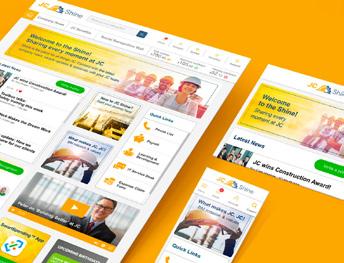
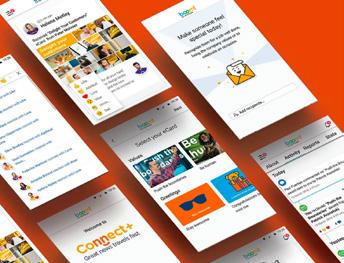

and connect your people, wherever and
they work.
Contact our team to learn how a highly engaged workforce leads to improved performance and stronger business results.
How to Reward, Recognize and Connect Your Employees rewardgateway.com Rewards Recognition Communications
Inspire
however
reward, recognition and communications solution.
Reimagine
2023 Trends: The Future Of Diversity, Equity, Inclusion, And Belonging
Three critical elements to consider
By Ivori Johnson, ChartHop
Over 60% of workers consider diversity, equity, inclusion, and belonging (DEIB) a critical factor in their company’s ability to drive success. Yet a majority of companies still lack clear, relevant DEIB strategies.
By focusing on DEIB, organizations can transform how their employees work with and relate to each other. Companies prioritizing DEIB in 2023 should consider these three critical elements.
Merging DEIB and HR
Because they often share similar responsibilities, the roles of DEIB and HR leaders frequently overlap. A DEIB leader may sit in on HR-led performance reviews as an impartial observer to identify possible bias, for example. These leaders may also contribute to onboarding to ensure the company’s process is inclusive.
But whether DEIB leaders participate in all HR operations, HR must operate with DEIB as top of mind.
Not merely focused on diversity numbers, DEIB is evolving into what HR was initially built to provide: a safe space for employees. More companies are partnering with DEIB and HR to lead their people — from the C-suite to entry-level employees — with an inclusive approach. An inclusive culture for employees of all backgrounds creates a feeling of emotional safety. Employees need to feel comfortable trusting their teams and sharing their true identities.
Investing in DEIB to Retain Top Talent
Employees want to see their companies “walk the walk” by championing and implementing
DEIB strategies to make impactful change. In fact, nearly 80% of workers expect their company to value DEIB. More organizations talk about the need for DEIB. But, they must turn those promises into action by investing in DEIB initiatives, like championing employee resource groups (ERGs) or hosting DEIB conversations focused on retention, inclusive benefits, and policies. A failure to do so shows a lack of commitment to their employees.
Organizations also need to invest in DEIB. Positive change and commitment happen when DEIB teams have buy-in from executive leadership and the budget and headcount to drive their DEIB goals forward. For example, a company wanting to foster a sense of belonging and connection in a hybrid workforce must budget for company offsites and training sessions.
Human Experience Excellence presented by HR.com December 2022 20 Submit Your Articles
Companies that don’t turn their promises into action will continue to see the same cycle of losing top talent and lack of employee engagement. Ultimately, as employees increasingly prioritize culture and work environment over compensation, they will stay with a company that aligns with their needs.
Emphasizing Inclusive Language
Employees are 50% less likely to leave a company where they feel a sense of belonging. Inclusive language contributes to cultivating that feeling by ensuring everyone feels acknowledged, accepted, and welcomed.

● Encourage employees to reconsider using the nongender-neutral catch-all greeting, “Hey, guys.”
● Add pronoun fields to employee profiles in the employee directory.
● Make a conscious effort to use inclusive language regarding different holidays.
Companies that embrace a growth mindset about updating their vocabularies, respecting employees’ pronouns, and incorporating information about all upcoming holidays into monthly internal communications will stand out in their efforts. Ultimately, when employees feel a sense of belonging, leaders will likely see increased retention and a more robust workplace culture.
Weaving DEIB into a company’s culture and DNA should remain a business priority in 2023 and beyond. To meet evolving employee needs, organizations must commit to adjusting their DEIB initiatives and strategies. This commitment creates an environment where employees feel respected, accepted, and valued.
Former Hampton University and Penn State alum Ivori Johnson (she/her) is recognized for her work in the diversity, equity, inclusion, and belonging space. She identifies as a masculine-presenting Black queer woman and bonus mom. Ivori is the Director of Diversity, Equity, Inclusion, and Belonging at ChartHop and has worked for organizations such as Google, Twitter, DuPont, and Capital One. She is passionate about creating opportunities for underestimated communities, but most importantly, making sure that all people belong and are welcome in any industry.
Would you like to comment?

Human Experience Excellence presented by HR.com December 2022 21 Submit Your Articles 2023 Trends: The Future Of Diversity, Equity, Inclusion, And Belonging
Why So Many Companies Suck At Employee Experience?
It’s wrong when companies focus on managing rather than leading people
By Ann Barlow and Courtney Ellul, Peppercomm
The combination of the pandemic and a hot job market produced a sea change in employer/ employee dynamics. For the first time, employees across a wide range of sectors and roles have felt as powerful as their employers on the status of their jobs and careers. With job openings vastly outnumbering people willing to fill them, employers recognized the urgent need to create the kind of employee experience that would attract and, more importantly, retain employees – or risk losing them to competitors.
For some, i.e., those Most Admired Companies list regulars, these conditions may have led to some tactical shifts, but not the wholesale conversion to a more balanced power dynamic that most companies had to adopt if they were to meet their people goals. And what a conversion. Like never before, employers gave employees agency over how and where they work. They asked for input, not just on individuals’ job responsibilities but on how things get done in the departments and business units. They solicited ideas for shaping policy and culture, and invited team members to contribute new solutions and processes. In other words, they have fostered the sense that employees are valued, recognized, and heard.
On the other side of the scale, many executives have embraced this more symbiotic relationship where both sides respect one another’s needs and
priorities. They understand the correlation between employee satisfaction and business impact and that, in creating a people-first culture, they are promoting employer brand and reputation, retention, recruitment, and overall company success. Sadly, though, plenty were dragged kicking and screaming into this more balanced power dynamic. If the ever-looming recession does arrive, they’ll joyfully trot back to their comfort zone of command and control, and the belief that businesses run better when the implicit message to employees is, “Do it my way or else.”
That’s why when it comes to ongoing employee experience, most companies, to be blunt, suck.
Shared Benefit for the Road Ahead
Chances are, you’re at least partially surrounded by people who are looking forward to a nice recession so they can return to telling employees what’s what. If you are, we’re sorry – we feel your pain because we encounter the employer-dominance model all the time. What follows? Not surprisingly, a mixed employee experience at best.
But there are a few things you can do to try to remind your colleagues how well things have gone when both employer and employee have benefitted, or as we call it, Shared Benefit.
Human Experience Excellence presented by HR.com December 2022 22 Submit Your Articles
TOP PICK
1. Package Your Data
If you succeeded in retaining high performers or simply kept turnover to a minimum, well done. There is a lot of research available on how much a company saves through employee retention – anywhere from one-third of an employee’s salary to several times the salary if the person is in a key role with skills that competitors would very much like to have. There are other, less tangible benefits, too, such as keeping people who contribute to a positive culture or mentor next-gen employees and increase their value to the organization. Review, quantify and present your findings. If, like a lot of HR leaders, you’re unsure of the accuracy or thoroughness of your data, deliver your best assumptions and be able to articulate why you arrived at the numbers you did.
Do the same with your employee engagement numbers. Even if you’ve experienced some quiet quitting, chances are if you have shown employees that they are valued, you’ll have some positive data to share, too.
2. Correlate to Business Performance (again)
If you need to cite to colleagues yet another study that reinforces the notion that a people-centric culture leads to better business performance, McKinsey’s Organizational Health Index consistently shows that the top quartile of business cultures post a return to shareholders 60 percent higher than median companies and 200 percent higher than those in the bottom quartile. If you revert to a command-andcontrol approach to leadership, do they expect better employee, and thus company, performance?
3. Remind Colleagues – ManageThings, Lead People
As author and leadership expert Stephen M.R. Covey reminds us, we manage things and lead people. Things need control and containment – think budgets, inventory, systems. People, on the other hand, rarely thrive when they’re treated like tools or assets. “Command and Control is transactional—get the deal, finish the job, stop an undesirable behavior, and do it fast,” says Covey. “That’s the notion of
efficiency shining through. Trust and Inspire is transformational—it focuses on building relationships; developing capabilities; enabling, empowering, and growing people. And the irony is that not only is this the far more enduring approach, but it’s also actually the more efficient way to get things done as well. Remember this: with people, fast is slow, and slow is fast ”
4. Suggest a Framework for Some Top-Down Direction
In their book, Beyond Great, BCG Managing Director Jim Hemerling and his coauthors recommend organizations follow the Spotify method of leadership, which combines strong alignment with autonomy. It calls for leaders to build alignment by providing a clear purpose, future direction and objectives and milestones. Then, as leaders communicate these to their organizations, they allow for autonomy to get the job done. With a strong structure in place, leaders then need to create space for teams to execute on the how.
In essence, you’re creating an opportunity for leaders to exercise some command and oversight while empowering teams to create solutions – a compromise, but a highly effective one.
Human Experience Excellence presented by HR.com December 2022 23 Submit Your Articles Why So Many Companies Suck At Employee Experience?
5. And a Reminder –This Too Shall Pass

If all else fails, you can remind your control-loving colleagues that if we do have a recession and employees lose that sense of Shared Benefit, they’ll comply with authoritarian leadership – for now. But just as they did when the worst of the pandemic subsided and frustrated workers headed for the exits, your valuable talent will watch and remember as they polish their resumes. And when the time is right, they’ll find new places to work and your colleagues will be unhappy at having to spend so much of their precious time interviewing candidates, training new employees and doing their best to shore up customer relationships their former employees led so well.
As you’ve gathered by now, for us, poor employee experience stems from executives who are highly reluctant to empower employees to determine how best to meet goals and solve problems. Instead, they prefer maintaining a command-and-control approach to managing people as they would manage systems, processes and actions. There are other contributing factors, of course – poor communication and poor management project management, for instance. But all of these normally ensue when companies focus on managing rather than leading people.
These next 12 months will serve as a critical test as to whether more companies have learned from the Shared Benefit model of 2021 and most of 2022, and can continue to apply lessons from the model even as belts tighten. If your company is led by people more inclined to wield power than influence, we invite you to use the tips here and share your own.


Human Experience Excellence presented by HR.com December 2022 24 Submit Your Articles
Would you like to comment?
Ann Barlow (San Francisco) and Courtney Ellul (London) lead Peppercomm’s Employee Experience practice. Ann and Courtney are passionate about internal communications and helping clients to be the voices of employees and facilitators for engagement – and lasting, positive change.
Why So Many Companies Suck At Employee Experience?
Four Tips For Fighting Employee Burnout
HR leaders should step up and alleviate widespread workforce burnout
By Keisha Behrmann, CoachHub
Since the start of the Great Resignation and with a recession looming, many employers are asking employees to do more with much fewer resources. And, after years of sprinting, employees are spread thin and just plain tired. In fact, according to McKinsey Health Institute, over a quarter of employees in the U.S. are burnt out.
Now is the time for HR leaders to step up and alleviate widespread workforce burnout. But how?
As one of the many Americans who has faced professional burnout, I can tell you firsthand how an engaging career can become an exhausting and overwhelming chore. After 23 years with the government — first in the Air Force and then with its civil service HR team — pandemic complications added confusion and chaos to my once highly-motivating career. The unprecedented challenges I faced
led to so much stress and exhaustion that I finally left the position.
This was a blessing in disguise for me as an HR professional. Direct experience with burnout enabled me to address my employees’ burnout better — or prevent it altogether.
Here are four tips for fighting burnout among your employees:

1. Actively Prevent Burnout
It may seem obvious, but the best way to fight burnout is to prevent it from happening in the first place. Helping employees stay on the right track is easier than addressing problems when people already feel hopeless, uninterested, and stressed. Look for warning signs like nosediving productivity and faltering innovation, and, most importantly, put preventative measures in place.
Build a corporate culture that values openness, inclusion and people’s holistic well-being so employees feel empowered to come to HR or management when they have concerns inside or outside of the office. Host open forums encouraging your workforce to address concerns like fostering work/life balance. Mental health screenings and resilience workshops are also effective approaches to employee well-being. Of course, despite your best efforts, mental health challenges can still arise, so offer safety nets and employee assistance programs that support employees when they falter.
Human Experience Excellence presented by HR.com December 2022 25 Submit Your Articles
2. Offer Personalized Coaching Options
While broad workforce wellness solutions can help stave off burnout, people also benefit from more individualized support. After all, each employee is managing his or her own unique challenges and needs to bolster particular skill sets to deal with these challenges. Offering personalized coaching all employees, regardless of seniority, allows HR leaders and managers to prioritize every single employee’s well-being — on an individual basis. One-on-one coaches focus on specific stressors and pain points, from improving confidence to taking on workplace challenges to managing stress. I know this firsthand.
Upon joining my current company, I was set up with a personal coach. Initially, I was uncertain. I was afraid a coach would push me into pursuing more responsibility and the next job title before I was ready. I was wrong. My coach started our relationship by asking what I wanted to work on. Did I want to strengthen my strengths or work on my weaknesses? Did I need resilience skills or management strategies? With options on the table, I decided to work on my residual burnout left over from my previous position. My coach used questions and self-reflection techniques to help me love working again.
3. Empower Employees to Pursue Their Interests
Because growth doesn’t always happen at work, encourage growth, learning and curiosity inside and outside of office hours. Empower employees to shut off their email and Slack notifications during off-hours and pursue their personal interests. Ask people about their hobbies, follow up on how a class went or invite
employees to participate in an all-company volunteer event. Even consider offering designated PTO for ongoing education and community involvement.
By working hard during the day and then switching off after work, I’ve found fulfillment through a unique hobby: beekeeping. I feel revitalized after spending time disconnecting from my job and reconnecting with myself. And — you know what? — it makes me a better worker! Having the flexibility and freedom to think about something other than work makes me a more creative, more innovative contributor to my team.
4. Promote Growth and Development
Most employees want a chance to master skills and learn at work. The best way to find out what interests your workforce? Ask them. Send out surveys to see what excites people and then plan activities and initiatives based on the results. Lunch and learns, breakout sessions and webinars are also ways to keep employees engaged, upskill your workforce and offer opportunities for colleagues to collaborate.
After my department met its goal of hiring in North America this year, I began assisting our European colleagues. I’m helping my company while learning from recruiters in other countries — the way they work and the particular steps they take depending on particular personalities and cultures.
Take it from me: no one is immune to burnout But HR leaders must try to prevent exhaustion and exasperation in the workplace before it settles in and demoralizes your valuable employees. Coaching, disconnection and development can also be powerful tools in your HR toolbox, helping your people and your company thrive.
Keisha Behrmann is a Senior Talent Acquisition Specialist for CoachHub, the leading global digital coaching platform.
Would you like to comment?

Human Experience Excellence presented by HR.com December 2022 26 Submit Your Articles
Four Tips For Fighting Employee Burnout
Put Employee Engagement At The Heart Of Your Business To Beat The Effects Of The Great Resignation
Focusing
on your employees might be the best business decision you ever make
By Sara Cohen, Forsta
The post-pandemic business landscape has brought unprecedented changes to how organizations are expected to operate, and we have seen a major re-evaluation of practices, culture, and structure across workforces and industries alike. One change that has not only altered business values, but the power dynamic of the job market itself, has been the Great Resignation. We have seen employees switch organizations, roles, and career paths at an unprecedented rate, with a recent study by ADP finding that 71% of workers have contemplated a major career move already this year. The UK job market recently hit a point at which there were more jobs than job-seekers – signaling how difficult the battle is to retain talent across the board.
There is a clear message to every business, corporation, and organization out there – we must do more. That is, however, easier said than done. At Forsta, we work to power the tools companies use
to gather, analyze and identify the data needed to improve employee experience – and in our years of experience, we have come to find insight into just what companies need to do to fight the dark cloud of resignation.
Create an Employer Brand
From both a recruitment and retention point of view, the employer brand is perhaps the most important tool in the fight to recruit and retain. Creating a great employer brand means ensuring that your organization is a great workplace. By focusing resources on this, a lot of the other pieces will begin to fall into place. Putting your employees and employee engagement at the heart of business decisions shows not only that you care about your employees, but that you are focused on elevating them. Communication, support, team-building, and a workforce-centric culture all go a long way to helping your talent see that your business is the place to be.
Human Experience Excellence presented by HR.com December 2022 27 Submit Your Articles
TOP PICK
The Power of Data
Identifying what needs to change is the first, and often the most difficult, step in transformation. By gathering data, you can identify exactly what you are doing right, as well as what you are doing wrong. Employee surveys, built around your culture and practices, can help you diagnose your business issues and gather the information needed from the people you need it from – allowing your decisions to be evidence-backed. Using solidly supported insight is always more time and risk-averse than diving in without anything to back yourself up.
Using the right data in the right way is also something to consider. At Forsta, we have been using our data to improve our eNPS (Employee Net Promoter Score) – and have boosted our score by 29 points, which is a great indicator that we are moving in the right direction. This is just one metric that you can use to push your business to the next level. With the vast amounts of information you can gather, the sky is the limit.
Employee Well-Being
Employee well-being should be more than just a buzzword. The pandemic has put personal well-being at the forefront of our minds and has made us realize just how vital it is to feel supported in every aspect of our lives. The workplace should be a safe space in which employees feel valued and secure. If an organization cannot supply these basic necessities, not only will your engagement and performance suffer, but so too will the individuals that make your organization what it is.
Looking after your workforce means a lot of things, and should be both formally and informally addressed in your culture. My team has been able to find success in the rollout of our global employee support program by using regional data to provide tailored, local-language mental health resources on a country and market-specific basis. In addition to these types of programmes, it is important that your management is flexible and equitable, giving employees the tools to tailor their experience to their circumstances –whether that be permission to keep their cameras off
if they feel uncomfortable, flexible hours to tend to family, or taking time off for personal care.
Teambuilding and Communication
Building a team where everyone pulls together thus creating a community and support network is key to the modern business environment. The importance of businesses being safe and open spaces cannot be understated, and building a team culture is the engine to drive that change. Management needs to make an effort to check in with their employees, give clear lines of communication within and between teams, and institute a culture where employees can communicate what needs to change as well as what works.
Consider putting on social events for your employees – this gives them time to unwind and the opportunity to get to know each other in a non-professional setting. These types of events help your personnel gain that comfort with each other and your business as a whole – elevating your employee brand.

It takes time and effort to build a brand, while also engaging your workforce, but by doing so, you open the door to a business that not only values but keeps and attracts talent. Focusing on your employees might be the best business decision you ever make.
Sara Cohen is the Chief People Officer at Forsta and has global responsibility for all things people related. Based in New York City, Sara is responsible for developing Forsta’s people strategy and development across all our global locations. Prior to Forsta, Sara spent several years at GroupM, leading the people team for Xaxis, a programmatic media agency.
Would you like to comment?
Human Experience Excellence presented by HR.com December 2022 28 Submit Your Articles
Put Employee Engagement At The Heart Of Your Business To Beat The Effects Of The Great Resignation
Why Feeling Connected When Working Apart Is More Important Than Ever
Employee engagement in a digital world
By Avigail Dadone, Diligent
For many organizations, everything from annual employee reviews, to work socials, to team onboarding has become virtual. What started as a reaction to a global pandemic is likely here to stay, with reports indicating that 25% of high paying jobs will be remote by the end of this year. The future of work is hybrid and borderless, but that can also pose challenges around employee engagement, communication and trust. As HR professionals, we now need to be much more intentional with how we onboard, engage, support and communicate with employees.
Technology might make it easier than ever to contact your team members, but it’s made it a bit trickier to connect with them in
more meaningful ways. Fostering genuine communication, trust and transparency have become important learning opportunities as organizations spread across the globe.
Employee engagement should be the north star when searching for a way to make flexible work arrangements a success. Engaged employees are happier, more motivated, and keep organizations moving toward a cohesive vision. In a recent report, companies with good engagement were found to be 22% more profitable than those without it. Similarly, in another report, a whopping 69% of people rated feeling fulfilled at work as important when deciding to stay with a company. People who aren’t engaged leave, taking their knowledge with them and
impacting morale within existing teams. By investing in our teams and taking a modern approach to engagement and onboarding, HR teams can better position themselves to support employees in the way they need.
Invest in Your People
The Great Resignation is not quite over yet. Now, businesses are entering a new era: The Great Reshuffle. Organizations are reshuffling priorities, projects and people to ensure their employees are feeling engaged and inspired at work. Two engaging ways an organization can invest in its people are by implementing platforms for consistent, transparent communication and through running employee-led programs.
Human Experience Excellence presented by HR.com December 2022 29 Submit Your Articles
At Diligent, for example, we implemented consistent, company-wide one-on-ones between managers and team members. We leverage 15Five, a platform to conduct pulse checks which create an ongoing conversation between employers and employees, so staff is excited about the next steps in their work and career.
Often, disengagement can be tied to employees not seeing where their future at an organization is. This is even more important considering how growth-oriented the next wave of talent is. In fact, over three-quarters of Gen Z respondents said
continual learning was key to their advancement.
Another way we’re investing in our people, for example, is by introducing and celebrating our employee-led “Change Agents” program. This program brings together voices from different roles, experience levels, skill sets and backgrounds across the company and helps ensure there is diverse representation to create the best outcomes for our organization. This group acts as a mouthpiece for the broader employee base and meets regularly with leadership to find ways to improve our culture and operations.
Initiatives like these encourage engagement and enable senior leaders to publicly and privately recognize the work of those stand-out team members. With only 21% of workers reporting feeling engaged at work in 2022, there’s a big opportunity for HR departments to help fill the gap with fun, unique and inspiring team investments.
Onboard the Modern Way
The ever-changing world of work paired with talent becoming accustomed to hybrid and remote setups means companies need to shift focus to keep employees supported and inspired.

Human Experience Excellence presented by HR.com December 2022 30 Submit Your Articles
Why Feeling Connected When Working Apart Is More Important Than Ever
Onboarding and introducing new programs doesn’t have to be delivered through a PowerPoint presentation. Forward-thinking organizations are using multimedia tools like podcasts and videos to bring on new team members and introduce new programs to existing employees. This offers teams a way to engage with work remotely without staring at a static screen.
Other unique onboarding methods are expected to show up across organizations as we get creative training in the digital world, from shortening sessions to having team-run programs. Remember, onboarding doesn’t have to end with new employees. Hosting

a company-wide session like a lunch-and-learn to engage the entire company on how the organization is navigating change is a great, dynamic approach.
What’s Next? The Future of Engagement
One thing we learned over the past two years was that hybrid work is a complex landscape, and we learn something new every day. We are still learning and listening to our employees and ourselves, and that’s ok.
HR teams should focus on implementing engagement strategies that focus on health, happiness, and future success for all members of the company. Invest in your team and onboard
the modern way and your workforce will be sure to feel motivated and balanced on- and offline.
Would you like to comment?
Human Experience Excellence presented by HR.com December 2022 31 Submit Your Articles
Why Feeling Connected When Working Apart Is More Important Than Ever
Avigail Dadone is Chief People Officer at Diligent, the global leader in modern governance providing SaaS solutions across governance, risk, compliance, audit and ESG.
HRCI® & SHRM® CERTIFICATION PREP COURSES
GROUP RATES AVAILABLE
For HR Professionals
Show that management values the importance of the HR function, and has a commitment to development and improvement of HR staff.
Ensure that each person in your HR department has a standard and consistent understanding of policies, procedures, and regulations.
Place your HR team in a certification program as a rewarding team building achievement.
For Your Organization
Certified HR professionals help companies avoid risk by understanding compliance, laws, and regulations to properly manage your workforce.
HR Professionals lead employee engagement and development programs saving the company money through lower turnover and greater productivity and engagement.
A skilled HR professional can track important KPIs for the organization to make a major impact on strategic decisions and objectives, including: succession planning, staffing, and forecasting.
HR.com/prepcourse CALL TODAY TO FIND OUT MORE 1.877.472.6648 ext.
3 | sales@hr.com
1 Less expensive than a masters or PhD program, and very manageable to prepare with flexible study options. 2. Recertification - ensures HR professionals continue to be up to speed on the latest legislation and best practices 3. Recognized, Industry benchmark, held by 500,000+ HR Professionals We offer group rates for teams of 5+ or more for our regularly scheduled PHR/SPHR/ SHRM or aPHR courses.
For groups of 12+, we can design a more customized experience that meets your organization’s needs. You can have scheduling flexibility in terms of the days, times, and overall length of the course.
Groups rates for HRCI exams are also available as an add-on.
All group purchases come with 1 year of HR Prime membership for each attendee to gain the tools and updates needed to stay informed and compliant.
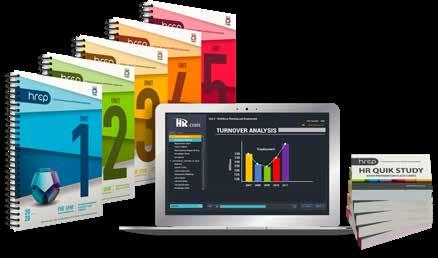
Why Certification is the Best Choice:
CALL TODAY TO FIND OUT MORE 1.877.472.6648 ext. 3
sales@hr.com | HR.com/prepcourse Group
2
|
Rate Options 1
3
4 Employee Experience Trends For 2023
Technology will increase empathy, identify growth opportunities, and more
By Melanie Lougee, ServiceNow
The Great Resignation. Quiet Quitting. Career Cushioning. The past year has been riddled with workplace trends made only more difficult by a recession, layoffs, and ongoing economic uncertainty. As leaders reflect on 2022 and plan for a New Year, they will undoubtedly continue to brace for uncertainty while honing their purpose, values, and culture. Employee experience will remain top of mind.
Here are four trends HR and people managers should be paying attention to as they think about creating better work environments in the new year:
Manager Enablement Will Be a Key Ingredient to Employee Success
Right now, there is immense pressure on people managers to keep teams and direct reports productive, happy, and engaged. As work has transformed over the past few years, managers have evolved from simply driving deadlines and productivity to focusing on the end-to-end employee experience. The past year was incredibly stressful for managers as they navigated managing geographically dispersed teams, talent shortages, mental health and more, all while trying to stay on top of their own deadlines.
Companies need to prioritize their people managers if they want to be successful, and I predict 2023 will be a turning point for the manager experience. Leaders will invest in systems and technologies that support the manager experience, providing a central place to track performance and goals, access company resources, and find personalized training.
Ultimately, giving managers the support they need will drive business outcomes. According to Gallup, companies that increase their number of talented managers achieve, on average, 147% higher earnings per share than their competition.
In 2022, it became increasingly clear that the only thing constant is change. Organizations that prioritize employee experience, agility, and technology will be the ones to win in the New Year. Do you have your goals set?
Skills Mapping Will Help Match Employees to Opportunities
There has been a renewed focus on upskilling and reskilling over the past year—and for a good reason. The economy is tightening, which is challenging companies to rethink how they retain and deploy talent while driving business results with smaller budgets. At the same time, employees are looking for opportunities to learn and develop their skills to grow their careers and increase their value. Skills will be the new currency for connecting people with the right learning and growth opportunities.
Today, learning and development is often siloed. Employees struggle with numerous disconnected point solutions and fragmented processes that don’t work together. They have one system to track goals, another for learning and development, a third for mentorship, and a fourth for recognition and feedback. These systems rarely distribute governance to the business units responsible for their own business results.
Human Experience Excellence presented by HR.com December 2022 34 Submit Your Articles
TOP PICK
In 2023, I predict that organizations will shift from investing in point solutions to investing in platforms that bring learning and development together for a holistic and connected experience. This learning will be embedded in the flow of work making it more accessible by employees and managers and more relevant to the immediate business at hand.
Skills mapping technology will also gain traction to help match employees within the company to new opportunities and relevant trainings. By leveraging skills mapping technology with AI and ML capabilities built in, leaders will be able to pair employees to work based on their strengths and areas of interest, instead of arbitrarily relying on who they know or how well they network. This will help to align the right employees with the right projects at the right time.
Skills mapping will also ensure employees achieve their goals by pinpointing gaps in their skillset and delivering personalized training right in the flow of their work.
Technology Will Help Create Better Offboarding Experiences

Many organizations have gone through the difficult task of laying off large numbers of employees this year. These transitions aren’t easy for the company or the individual. Regardless of circumstances –whether part of a layoff or a voluntary departure – the offboarding process deserves a renewed focus as employers look to balance policies and procedures with empathy and care.
Unfortunately, while many organizations have invested heavily in the onboarding experience, they haven’t invested nearly as much time or money in offboarding. The process can be messy and disjointed. Offboarding is also more nuanced than onboarding. Employees are rightfully upset and are less likely to provide information or complete forms. There is risk with security and access as well as a need to retrieve assets.
Human Experience Excellence presented by HR.com December 2022 35 Submit Your Articles
4 Employee Experience Trends For 2023
A departure is often an emotional and stressful time and needs to be handled with kindness and clarity to truly safeguard employee sentiment. This is where HR, again, needs to work with other departments— including IT, legal, and security—and where technology can play a substantial role. Digital solutions can break down silos across departments to make sure teams and individuals know what needs to be done every step of the way. When there is clarity on process and everyone is provided with information upfront, leaders can focus more on the human element of a departure.
Regardless of circumstances, it’s important to create a positive experience up until the end—you never know if an employee may decide to come back or who they could recommend in the future.
Workplace Data Will Be Used for RealEstate Optimization and to Improve the In-Office Experience
Businesses need to attract and retain top talent while at the same time managing spend amid economic uncertainty. Real estate is and will continue to be a key spending consideration for the C-suite. In a July 2022 survey from Gartner, 45% of CFOs said they planned to decrease spending on real estate over the next 12 months.
So how can companies decide where to cut costs while still maintaining the culture and community in-person workplaces can provide? Space management technology will be top of mind in the coming year, helping leaders understand how employees use workplaces – where they are sitting and gathering, how often they are coming in, and which days are most popular. With this information, leaders can make more informed decisions about how much space is needed and how office floor plans should be designed. This will also help to make sure resources, like heat and electricity, are used responsibly.
The last three years have shown us that an office is no longer a place people are going every day, but rather an event space used for collaboration, brainstorms, and team meetings. In this new normal, HR leaders need to be involved in how the workplace is designed for a truly holistic employee experience. It all comes down to listening to employees while maintaining the flexibility to evolve.
Melanie Lougee is the Head of Employee Workflow Strategy at ServiceNow. She has more than 20 years of experience working in HR technology and HR service management, including four years as a Gartner analyst where she provided advisory services to C-level and leadership teams on technology, transformation, change management and HR communications strategies.
Prior to Gartner, Melanie held various strategy positions at Oracle (and, formerly PeopleSoft) and enterprise software provider, Infor.
Would you like to comment?

Human Experience Excellence presented by HR.com December 2022 36 Submit Your Articles
4 Employee Experience Trends For 2023
5 Reasons Team Building Usually Fails
By Kim Baker, Vivid Performance Group
The need to build motivated trustworthy teams may never be greater. The highly publicized Great Resignation has caused many employees to leave their companies seeking not only higher pay but also more favorable prospects for future growth.
In fact, many disgruntled employees blame poor management, and a lack of positive reinforcement and guidance as the main causes for their departure.
Once thought to be a panacea to creating energetic and thriving staffers, many companies still turn to team-building events to help boost enthusiasm and increase productivity. Yet these endeavors, while providing a fun time for participants, are ineffective.

Team building events do not improve communication, build individual trust or better manage tensions and conflict within the group. Lacking an overall strategic plan, team members will return to their old habits and operations will continue as “business as usual”. Why?
Team building often fails for five different reasons:
1. The event was geared to be entertaining without regard for what was to be built. Attending a company-wide picnic, visiting an amusement park and/or spending a weekend at a campsite may breed some familiarity between individual team members but in reality, does little to build cohesion and fix issues among employees for the long term.
2. The event, which should be a solution, is not tangibly linked to a need, goal or objective. Management may see these outings as a reward or simply something to do since other corporations are doing the same. However, without a long-term strategy or series of other hands-on team-building practices, there is a little long-term gain.
Human Experience Excellence presented by HR.com December 2022 37 Submit Your Articles
Team building events do little to address the conditions needed to build a high performing team
3. Corporations buy into the myth that team building is an event, not a journey. Great teams are not built overnight or on one weekend. Highperforming squads are developed intentionally week to week, month to month and year to year. Creating a great team starts at the beginning with a solid game plan. Think of it as a diagram of what a high-performance organization should look like. The team is nuanced over time where outstanding players become great leaders and mentors, and new staffers receive the support they need to become a solid contributor to the team’s success.
4. CEOs believe feel-good events lead to better performance. Teammates may get to know each other a little better, and fun memories may endure but again these gatherings do little to meet and sustain three scientifically proven measures of team effectiveness. These measures include the ability to meet stakeholders’ needs, long-term improvement and overall team effectiveness.
5. The leader lacks expertise in evaluating human or team effectiveness. Leadership cannot be all things to all people. Managers
cannot be experts in all facets of their business operations. Those lacking in the team building skillset will find intent and results are never in alignment.

Effectively getting to the root cause of team issues requires knowledge and fluency in science-based frameworks that address team effectiveness, personality, conflict, trust and the impact of the organizational system on individual and team performance. Those lacking in the skillset to get to the root cause will find intent and results are never in alignment.
Over two decades in the learning and development industry, I have found nearly all team-building events are a waste of time and money. They do little to address the conditions needed to build a high-performing team. At times these actually do more harm than good. This happens when team members know and want the team to be better and recognize that the event was not “fit for the purpose” of fixing team issues.
Instead, leaders should adjust their expectations and repackage these events as social to blow off steam or welcome new members. They need to recognize for what it is, fun, and what it is not an opportunity to level up a poor performing or average team to greater heights.
Kim Baker is a team builder/designer, corporate consultant, and speaker. She and Vivid Performance Group help you build happy, trusting, get-it-done employees and teams.
Would you like to comment?

Human Experience Excellence presented by HR.com December 2022 38 Submit Your Articles 5 Reasons Team Building Usually Fails
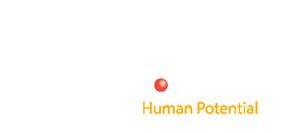
ePublication EditorialCalendar2023 Checkoutthenewandupcomingthemed HRtopicsinHumanExperienceExcellence-Engagement,Performance,Rewards &Recognition Check ePublications Editorial Calendar Here. Would you like to submit an article? | Write to us at ePubEditors@hr.com Submission Guidelines 2 Hybrid Work Model - Best Practices/ Challenges/Benefits Jan 2023 3 New Ideas and Tools for Effective Performance Management / Future of Performance Management Feb 2023 4 The State of Human Experience in the Workplace Mar 2023 5 The State of Rewards and Recognition Programs and Tools Apr 2023
The Rise Of The ‘Employee’ Rebel
 Key factors instigating the ‘rebellion’
By Murad Salman Mirza, Thought Leader, Organizational Architect, and Author
Key factors instigating the ‘rebellion’
By Murad Salman Mirza, Thought Leader, Organizational Architect, and Author
The conventional use of the term ‘Rebel’ in societal settings conjures up images of a disenchanted/ disenfranchised/disillusioned person who is driven to seek ‘corrective measures’ for all the injustices done to him/her. This can range from an innocuous public voicing of a different viewpoint in front of the influential/powerful quarters to violent confrontation against any opposition/wrongdoers as a harsh form of retribution.
However, within the professional realm, such dissension is generally driven by the prevalence of frustration/anxiety/premonition among professionals who are unable to ‘tag along’ with the ‘status quo’ promoted/preferred/preserved by the organizational leadership. The following table provides further insights into the respective context:
Human Experience Excellence presented by HR.com December 2022 40 Submit Your Articles
Gone are the days when budding professionals depended upon the paternalistic instincts of their employers to provide them with a viable career path. The capable professional of today is more informed, incisively skilled, and comes with a baggage of knowledge that enables leveraged negotiating targeted to achieve maximum gains within a mutually agreed frame of reference. Consequently, organizations are being pushed to increase the quality of ‘Employee Experience’ in addition to the ‘sweetening the conventional pie’ comprising of compensation and benefits to attract/retain the desired talent. The new arrangement taking root is one of ‘Employee Gratification’, where attractive ‘Total Rewards’ packages are customized to serve as ‘Golden Handcuffs’ on the desired talent as long as the organization sees/perceives a healthy ROI (Return-On-Investment) in terms of retaining them as part of its workforce. This can be visualized from the following chart:


Human Experience Excellence presented by HR.com December 2022 41 Submit Your Articles The Rise Of The ‘Employee’ Rebel
Such propensity for greater leverage in the Employment Relationship has been boosted by the phenomenon of the ‘Great Resignation’ that is giving additional ‘Food for Thought’ to the leadership within various corporate entities. The pandemic acted as a ‘wake-up call’ for a multitude of aggrieved employees as it triggered the reassessment of their priorities in terms of weighing the precariousness of their professional futures against the sacrifices being made in terms of compromising on the ‘quality’ of the time given to their loved ones/true passions. Results from a survey by Gartner encapsulate the evolving dynamics:
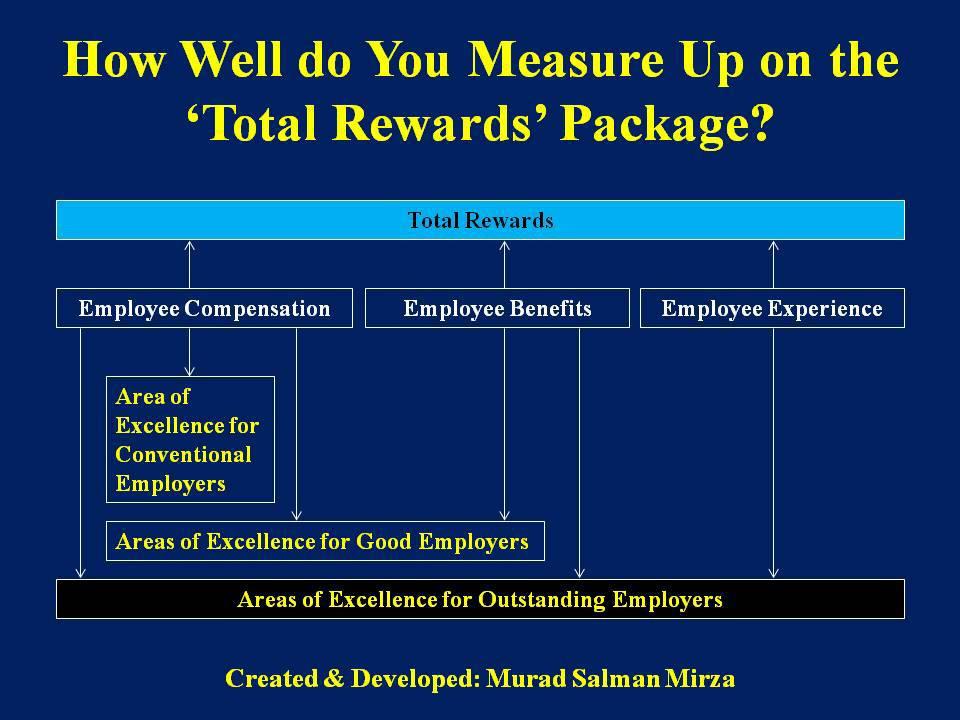
Human Experience Excellence presented by HR.com December 2022 42 Submit Your Articles
The Rise Of The ‘Employee’ Rebel
Three of the key factors fomenting the ‘Rebellion’ are as follows:
High Variance of Career Prospects within the Multigenerational Workforces
A large number of measures taken by the organizational leaders to ‘buffer’ the consequences of the economic downturn during the worst ravages of the Covid-19 pandemic impacted the various generations within the workforces differently. The senior employees, usually the most expensive in terms of compensation packages, generally suffered the most in the respective context. This resulted in not
only increasing discontent/anxiety among the relevant segments of the workforce but also, enhanced the ‘Rebellious’ trait within the younger members, who are generally the beneficiaries of mentoring/ grooming/facilitation from older generations, since they realized the futility of a long-term commitment to an organization that does not ‘care’ about its senior employees. Such a realization was in addition to the excruciating work practices already being borne by the new/junior employees within many organizations that encouraged/incentivized working long hours without reasonable breaks to offset any health concerns. Consequently, waves of resignations
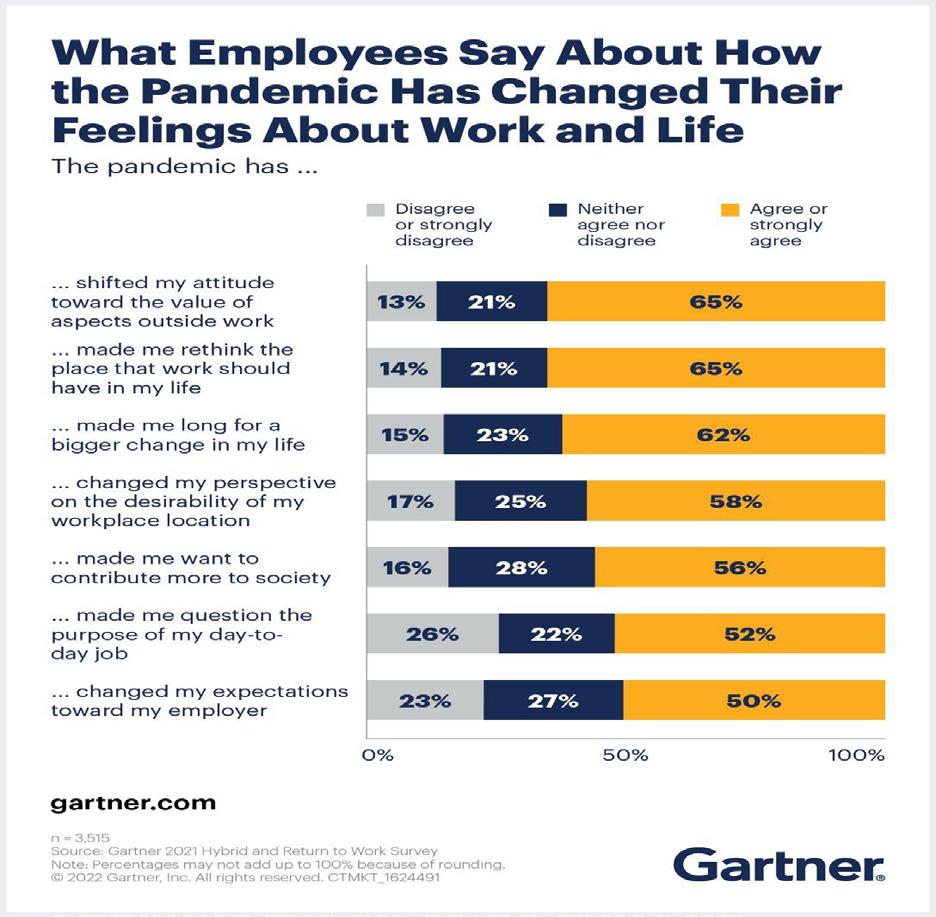
Human Experience Excellence presented by HR.com December 2022 43 Submit Your Articles
The Rise Of The ‘Employee’ Rebel
have been sweeping across such businesses at the cost of tarnishing the reputation of their Talent Management practices.

Raging Discontent with the Blundering and Indifferent Corporate Leaders
Corporate leaders are often proclaimed as ‘role models’ and expected to be the ‘true’ embodiment of the organization’s core values as an assuring/ reassuring sign of their unflinching support for the permeation of such ‘goodness’ throughout the organization. However, there has been a steady stream of management failures by the upper echelons of the corporate hierarchy that have plagued many ‘seemingly’ progressive organizations, e.g., Boeing, Facebook, Tesla, SpaceX, Blue Origin, etc. This has resulted in earning universal scorn from industry watchers and the wider citizenry, e.g., Amazon was ridiculed for trying to motivate Easter Sunday workers with a raffle to win water and a bag of chips, while also strengthening the calls for unionization to ‘collectively bargain’ for better working conditions. The severity of such ‘transgressions’ was even more
pronounced during the trying times of the Covid-19 pandemic, during which, many CEOs pocketed huge compensations while their employees at lower levels had difficulty in managing home budgets Consequently, the phenomenon of ‘quiet quitting’ has been increasingly embraced by the embattled employees as a form of passive resistance by lowering their engagement levels with ‘unaccommodating’ employers.
A Healthy Job Market with Promising Lateral, Vertical or Alternative Career Opportunities
The audaciousness of employees has been further elevated by the plethora of promising opportunities that are available in the market with economies across the world eagerly seeking to rebound from the worst ravages of the Covid-19 pandemic as observed within the corporate landscape of the USA. This is exacerbating the predicament of organizations pertaining to the hiring and retention of ‘desired’ talent. A recent survey by McKinsey attests to the respective aspect as reflected in the following statistics:
Human Experience Excellence presented by HR.com December 2022 44 Submit Your Articles
The Rise Of The ‘Employee’ Rebel
Consequently, the number of ‘Rebel’ Employees is steadily rising and they are exploring a wide bandwidth of options to have their voices heard at the upper echelons of the corporate hierarchy for the sake of judicious work practices, including, the astute utilization of the various social media platforms. On a more conventional note, this has led to a renewed interest in unionization despite strong opposition and desperate ‘union busting’ tactics by some big companies, e.g., Starbucks, Chipotle
It is important to remember that the ‘Rebellious’ disposition is not evenly divided across the multigenerational workforces with the younger generations, especially, Gen Z, being at the forefront of asserting their ‘rights’ to judicious treatment in terms of conducive work practices This can be observed from the results of a recent survey by Gallup:

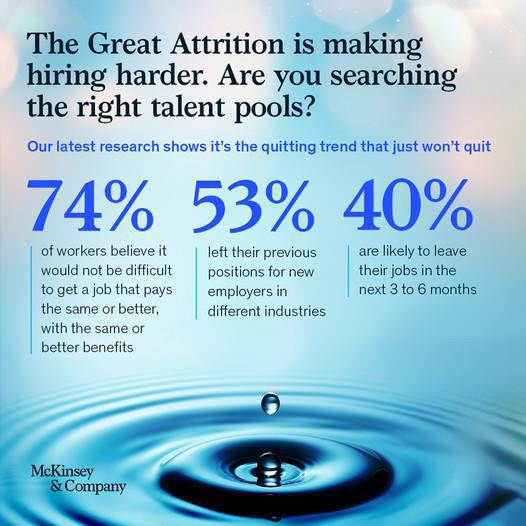
Human Experience Excellence presented by HR.com December 2022 45 Submit Your Articles
The Rise Of The ‘Employee’ Rebel
Consequently, organizations have to astutely and timely decipher the signals being sent from their multigenerational workforces and take appropriate constructive actions before it’s too late to remedy significant attrition of talent, slowing trends of productivity, sagging levels of morale and motivation, and depleting reserves of innovative capabilities. Additionally, the path to sustainable success, formidable competitiveness and continued relevance in a rapidly evolving Digital World is paved by ‘Productive Rebels’, rather than, ‘Insular Conformists’ Therefore, organizations need to make sure that their Talent Management practices have the ‘Breathing Space’ for ‘Free Thinkers’ and ‘Trendsetters’ who are imbued with the change imperative and enrich the ‘Organizational Aptitude’ in unconventional ways that boosts the ‘Core Value of Innovation’ effectively. Will you engage the ‘Employee Rebels’ constructively?
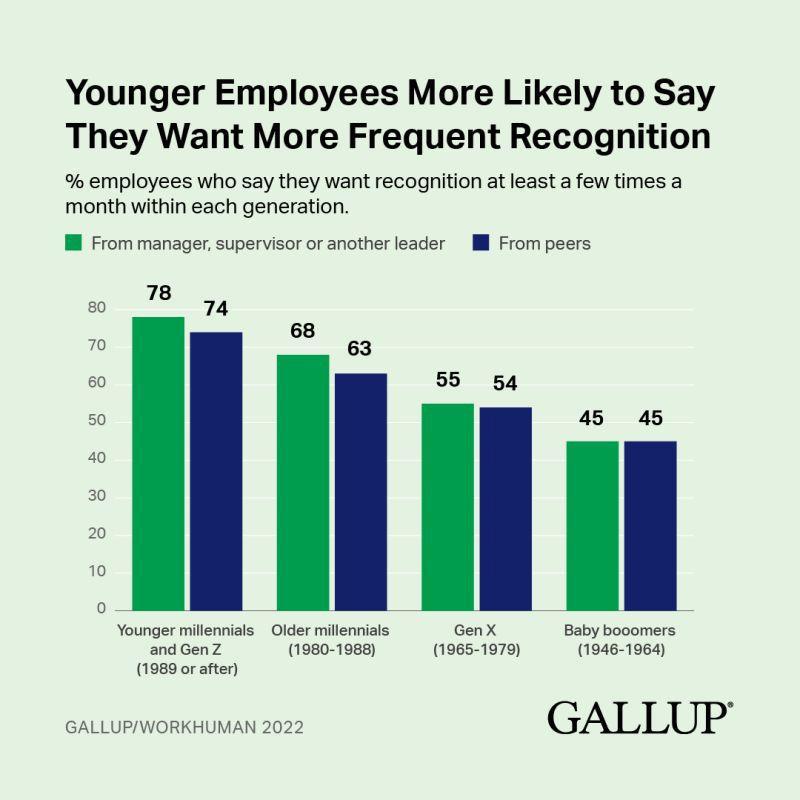
Murad Salman Mirza is an innovative thinker and an astute practitioner of areas within and associated with the fields of organizational development, talent management and business transformation. He is globally ranked in 9 areas (HR, Leadership, Culture, Management, Agility, Innovation, Future of Work, Change Management, Customer Experience) by the world’s first open platform for Thought Leaders based in the USA that uses artificial intelligence (AI) for ranking to preclude human bias. He has worked in various geographical regions across the world. Would you like to comment?

Human Experience Excellence presented by HR.com December 2022 46 Submit Your Articles
The Rise Of The ‘Employee’ Rebel
WEBCASTS
EVENTS & HR.COM WEBCASTS UPCOMING New Ideas and Tools for Effective Performance Management
VIRTUAL
2023 REGISTER People Strategy for the #FutureOfWork
19, 2023 REGISTER The State of Human Experience in the Workplace February 15-16, 2023 REGISTER VIRTUAL EVENTS Rated G: Becoming Great For All™
January 31,
January
2022
PM - 2:00 PM ET REGISTER Rising Minimum Wage Rates and How They May Impact Your Business
December 14,
1:00
2023
AM - 12:00 PM ET REGISTER The Secret Sauce for Employee Retention? Deliver the Career Progression Opportunities Employees Want
January 24,
11:00
2023
AM - 12:00 PM ET REGISTER www.hr.com/upcoming_webcasts www.hr.com/virtualconferences View our Upcoming Webcasts Schedule and Register Today! View our Upcoming Virtual Conference Schedule and Register Today! Engagement Transformed
January 17,
11:00
2022
AM - 12:00 PM ET REGISTER The Art, the Science and the Practice of Hybrid Workplaces
December 15,
11:00
2023
AM - 12:20 PM ET REGISTER
January 19,
11:45
Thank you for partnering with us!
The modern employee engagement platform for the modern workforce.

Sterling, a leading provider of background and identity services, helps 47k+ global clients create people-first cultures and hire with confidence.
Art of Mentoring combines evidence-based mentoring expertise with the latest technological innovations to enable organisations to develop impactful, cost-effective mentoring programs.
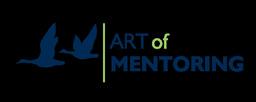
TRACOM is the leader in Social Intelligence training. We offer SOCIAL STYLE, Resilience, EQ and Agility assessments and training programs.
 LEARN MORE
LEARN MORE
LEARN MORE
LEARN MORE
LEARN MORE
LEARN MORE
LEARN MORE
LEARN MORE
Reward Gateway helps companies engage, motivate and retain people – every day, all over the world. Our unified employee engagement hub provides the best of recognition, reward, wellbeing, surveys, benefits and discounts that support talent acquisition, retention and valuesdriven growth.
Momentive is a new type of agile experience management company that delivers intuitive, AI-powered solutions built for the pace of modern business.

We power the brave, curious, and ambitious who want to reshape their customer and employee experiences, products, industries—and our future.
We put people at the center of our technology, and we’re here to collaborate with those who advocate for equality.
Founded with a single vision and purpose - Harrison helps companies optimize human capital by leveraging a deep understanding of human resources and psychology.

Jobvite is a comprehensive talent acquisition suite that powers a marketing-inspired recruiting approach from first look to first day.
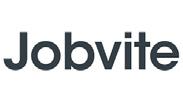
PARTNER WITH US
THANK YOU
LEARN MORE
LEARN MORE
LEARN MORE
LEARN MORE
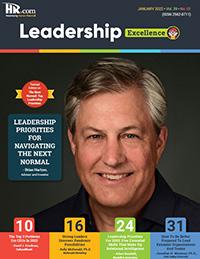
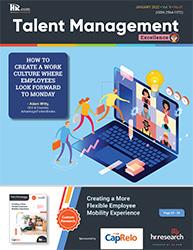

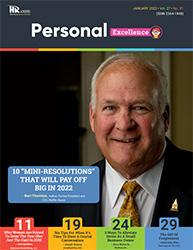
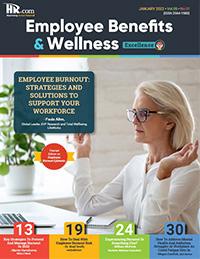

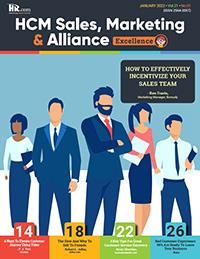
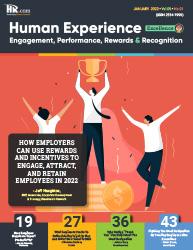

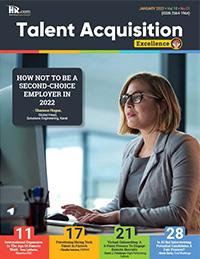
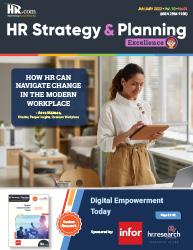
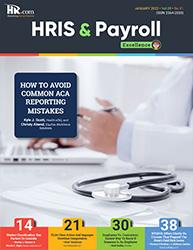
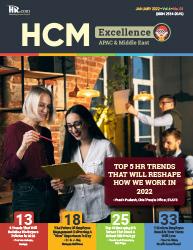
Like to submit an article? Use our online submission form or for more information go to www.hr.com/ExcellencePublications Publications 13 Targeted Publications to Reach Your Audience Informing, Educating, Enlightening and Assisting HR professionals in their personal and professional development, the Excellence series offers high-quality content through the publications!
























 Dr. Beverly Kaye
Dr. Beverly Kaye








































 Key factors instigating the ‘rebellion’
By Murad Salman Mirza, Thought Leader, Organizational Architect, and Author
Key factors instigating the ‘rebellion’
By Murad Salman Mirza, Thought Leader, Organizational Architect, and Author

























